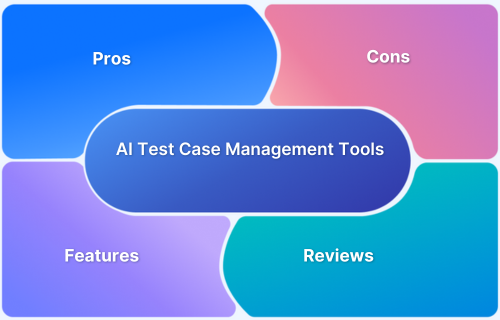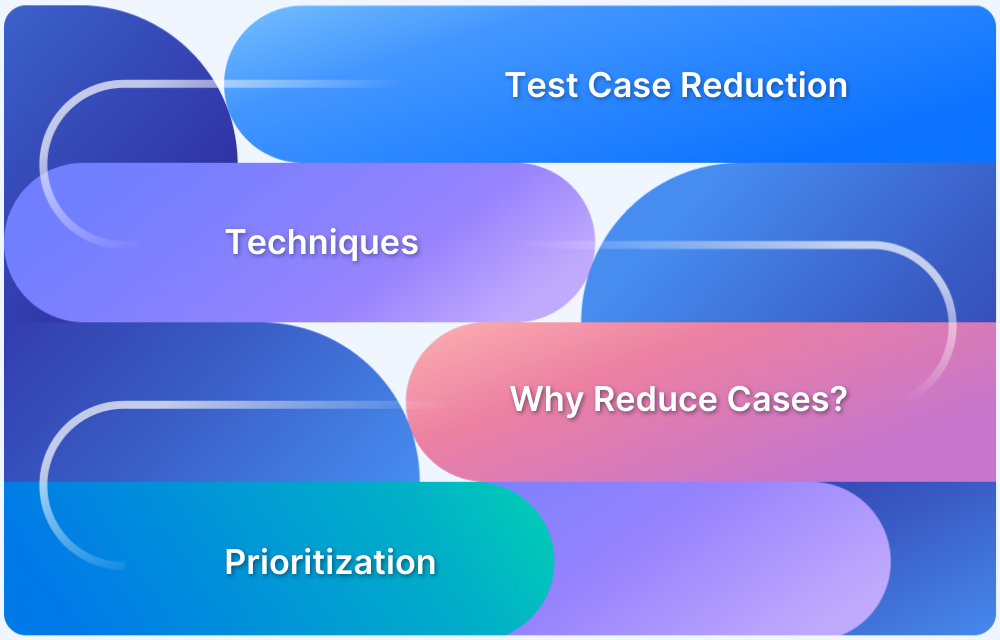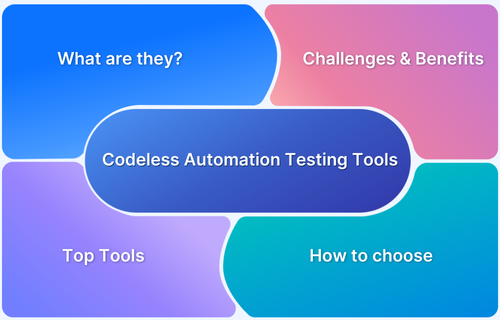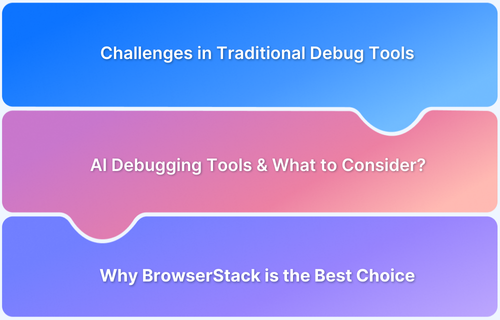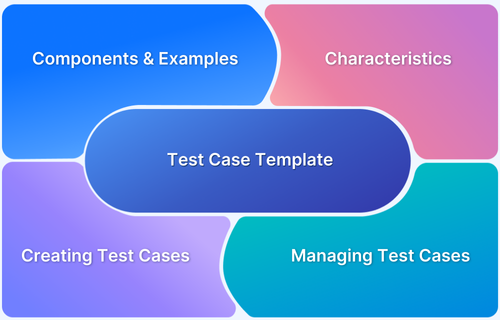Auto-Healing Automation is revolutionizing the way software tests are maintained by automatically detecting and fixing failures caused by changes in the application’s UI.
Overview
What is Auto-Healing Test Automation?
Auto-Healing Test Automation refers to the ability of test scripts to automatically adjust and fix themselves when there are changes in the application under test, such as changes in UI elements or locators. It helps ensure continuous test execution without manual intervention.
How It Works:
- Identifies Changes: Detects changes in the application, such as UI element changes or object locator shifts.
- Auto-Correction: Automatically updates the test script to reflect the changes without manual edits.
- Re-execution: Executes the test after auto-correction to ensure continued test coverage.
- Machine Learning & AI: Some auto-healing tools use AI to learn patterns and predict the changes in elements or actions, reducing the need for constant updates.
Why It’s Important:
- Reduces Maintenance Effort: Minimizes the need for frequent script updates, saving time and effort.
- Improves Test Reliability: Ensures tests continue to run smoothly even as the application evolves.
- Increases Efficiency: Reduces manual intervention and the likelihood of human error in script updates.
- Supports Agile Development: Helps in maintaining test scripts in fast-paced, frequent release cycles.
This article explores the concept of Auto-Healing Test Automation, its key benefits, and how it enhances the efficiency and reliability of software testing processes.
What is Auto-Healing Automation?
Auto-Healing Automation is a cutting-edge feature in software testing that allows test scripts to automatically detect and resolve failures caused by changes in the application’s UI or underlying code.
Traditionally, when a UI element such as a button or field is modified, it can break test scripts, causing them to fail. Auto-healing test automation addresses this issue by intelligently identifying the changed elements and dynamically updating the test scripts to reflect the new structure, ensuring continuous and uninterrupted test execution.
This approach reduces the need for manual intervention, minimizes maintenance costs, and enhances the overall reliability and efficiency of automated testing in fast-paced development environments.
BrowserStack’s Self-Healing Agent takes this to the next level by adapting and remediating automated tests that fail due to UI changes on your website. Powered by AI, it reduces automation build failures by up to 40%, ensuring smoother and more reliable testing with minimal manual effort.
How Does Auto-Healing Work?
Auto-Healing in test automation works by intelligently detecting and correcting failures caused by changes in the application’s UI or structure. Here’s a breakdown of how the process typically works:
- Detection of Test Failures: When a test fails due to a missing or changed UI element (e.g., a button, text field, or link), the auto-healing tool identifies the cause of the test failure by analyzing the test’s underlying components, such as locators.
- Locator Analysis: The tool assesses the attributes of the broken element, such as its ID, XPath, CSS selector, or position on the screen. It then compares these attributes to the current UI structure to find any changes (e.g., renamed IDs or relocated elements).
- Finding Alternative Elements: Using advanced algorithms, including machine learning and pattern recognition, the tool searches for alternative matching elements in the UI. This might involve looking for elements with similar properties or attributes, ensuring that the test can continue running.
- Dynamic Script Updates: Once the new locator is identified, the auto-healing tool automatically updates the test script to reference the new or updated UI element. This change is applied without requiring manual code modifications.
- Test Re-validation: After updating the test, the system re-runs the test with the new locators to ensure the script now works correctly. If the test passes, the process is complete. If not, further analysis and adjustments are made.
- Continuous Learning: Over time, self healing testing tools learn from past fixes and improve their ability to detect and repair similar issues in the future, making the process more efficient and accurate with each test run.
BrowserStack’s Low-Code Automation leverages AI-powered Auto-Healing to seamlessly adapt to UI changes without manual intervention, offering a scalable and reliable testing solution.
With this integration, teams can effortlessly maintain their test scripts and ensure smooth execution across real devices and browsers, all while reducing the time spent on test maintenance.
Key Benefits of Auto-Healing Automation
Auto-Healing Automation offers several advantages that significantly improve the efficiency, reliability, and scalability of software testing. Here are the key benefits:
- Reduced Maintenance Overhead: Auto-healing eliminates the need for constant manual updates to test scripts due to changes in the UI, greatly reducing the time and effort required to maintain tests.
- Increased Test Reliability: By automatically fixing issues caused by UI changes, auto-healing minimizes flaky tests and ensures that test results remain consistent and accurate, even as the application evolves.
- Faster Feedback Loops: With automated updates to test scripts, teams can quickly re-run tests without waiting for manual fixes, resulting in faster feedback and enabling quicker decision-making in the development process.
- Cost Efficiency: Reducing the need for manual intervention lowers the operational costs associated with test maintenance, freeing up resources for other tasks and enhancing the overall ROI of the test automation process.
- Improved Test Coverage: Auto-healing ensures that tests remain valid despite UI changes, enabling broader test coverage without worrying about broken tests or missing scenarios. This ensures that all critical features are tested regularly.
- Enhanced Agility: In fast-paced development cycles, auto-healing helps teams keep pace with frequent code changes, allowing them to maintain test stability while releasing new features or updates quickly.
- Scalability: As applications grow and evolve, auto-healing ensures that tests can scale with the system, making it easier to test complex, large-scale applications with minimal maintenance.
Common Challenges and Limitations
While Auto-Healing Automation provides numerous benefits, there are several challenges and limitations to consider:
- Complex UI Changes: Auto-healing tools may struggle with significant or complex UI changes, requiring manual intervention for proper test functionality.
- False Positives and Misidentifications: There’s a risk of tools selecting incorrect elements, leading to test failures that may not accurately reflect application issues.
- Learning Curve and Tool Complexity: Implementing auto-healing can be challenging, especially for teams unfamiliar with the technology, requiring time for training and adaptation.
- Over-Reliance on Automation: Solely relying on auto-healing without human oversight can lead to missed edge cases or non-UI-related failures.
- Performance Overhead: The real-time analysis and updating of tests can introduce some delay, especially with frequent and complex UI changes.
- Tool Integration Issues: Some auto-healing tools may not easily integrate with all testing frameworks or CI/CD pipelines, causing compatibility issues.
- Limited Support for Non-UI Failures: Auto-healing tools are focused on UI elements, leaving non-UI issues like backend failures outside their scope.
Read More: Top 12 AI Automation Testing Tools
Implementation Best Practices
To ensure successful implementation and maximize the benefits of Auto-Healing Automation, it’s essential to follow these best practices:
- Design Robust and Flexible Locators: Creating flexible locators that combine multiple attributes ensures test scripts can adapt to UI changes with minimal disruption. By using dynamic attributes like text labels or relative positioning, you make your tests more resilient to small changes in the application’s layout.
- Integrate Auto-Healing into CI/CD Pipelines: To maximize the benefits, auto-healing should be part of the CI/CD pipeline so that tests are updated and revalidated automatically during every build. This ensures that your tests evolve in sync with the application, reducing manual intervention and streamlining the testing process.
- Use Version Control for Test Scripts: Keeping test scripts in version control systems like Git ensures that any modifications made by the auto-healing process can be tracked and reviewed. This practice allows for transparency and helps prevent errors from being introduced into the test suite.
- Monitor and Validate Auto-Healed Tests: Regularly monitor and validate tests after they are healed to ensure they continue to function as expected. While auto-healing tools can automate many fixes, it’s important to manually review complex or critical tests to avoid potential issues that may go unnoticed.
- Leverage Continuous Learning and Analytics: Enable your auto-healing system to learn from past repairs to improve its performance over time. By analyzing failed tests and reviewing how auto-healing tools handled them, teams can refine the process and improve the accuracy of future fixes.
- Establish a Testing Strategy for Complex Scenarios: While auto-healing works well for many UI changes, complex interactions may require manual intervention. Ensuring that auto-healing is supported by comprehensive manual testing allows you to catch edge cases that might not be addressed automatically.
- Set Clear Expectations for Auto-Healing Performance: Define performance goals for your auto-healing process, such as how quickly the system detects and resolves failures. Regularly evaluate these benchmarks to ensure that auto-healing is delivering value and meeting your desired speed and accuracy standards.
- Ensure Team Training and Knowledge Sharing: Train your QA and development teams on how auto-healing works and its potential challenges. By fostering a culture of knowledge-sharing, teams can collaborate more effectively to optimize the use of auto-healing tools and troubleshoot issues when they arise.
Unlock the Benefits of Auto-Healing in BrowserStack Low-Code Automation
BrowserStack’s Low-Code Automation leverages AI-powered self-healing agent to enhance the resilience of automated tests and reduce maintenance efforts. When a UI element changes or becomes unavailable, the platform doesn’t just mark the test as failed. Instead, it intelligently searches for alternative identifiers or uses relative positioning to locate the element, ensuring uninterrupted test execution.
Key Benefits of Self-Healing in BrowserStack Low-Code Automation:
- Adjusts to UI Changes: Minimizes false failures and ensures tests keep running.
- Lowers Maintenance Needs: Reduces the need for manual updates and debugging, saving time and effort.
- Ensures Reliable Test Results: Provides consistent outcomes across different browsers and devices, even with UI changes.
- Supports Cross-Browser and Mobile Testing: Works seamlessly with cross-browser and mobile testing, CI/CD pipelines, and reusable modules for comprehensive testing.
By combining self-healing with an interactive test recorder and low-code authoring agents, teams can quickly create tests and automatically handle dynamic UI changes. This enables reliable automation across real devices and multiple browsers, accelerating test creation by up to 10x and reducing build failures by up to 40%.
Conclusion
Auto-Healing Automation is a game-changer for modern software testing, offering unparalleled efficiency by automatically detecting and resolving test failures caused by UI changes. By reducing the need for manual intervention, it minimizes maintenance costs and ensures more reliable, consistent test results. As development cycles continue to accelerate, Auto-Healing provides the agility needed to keep pace with frequent updates and changes.
With BrowserStack’s Low-Code Automation, teams can fully leverage the power of Auto-Healing, ensuring smooth test execution across real devices and browsers with minimal effort. This integration not only saves time and resources but also enhances test stability, driving faster feedback cycles and more reliable releases.
BrowserStack’s AI-driven Self-Healing Agent further boosts efficiency by adapting to UI changes and reducing build failures by up to 40%, enabling teams to focus more on innovation rather than maintaining test scripts. By adopting Auto-Healing in your testing strategy, you can improve the overall software delivery process, allowing teams to focus on innovation rather than maintaining test scripts.



![What is Autonomous Testing [Tools and Steps Included] What is Autonomous Testing [Tools and Steps Included]](https://browserstack.wpenginepowered.com/wp-content/uploads/2025/03/What-is-Autonomous-Testing-Tools-and-Steps-Included.png)
